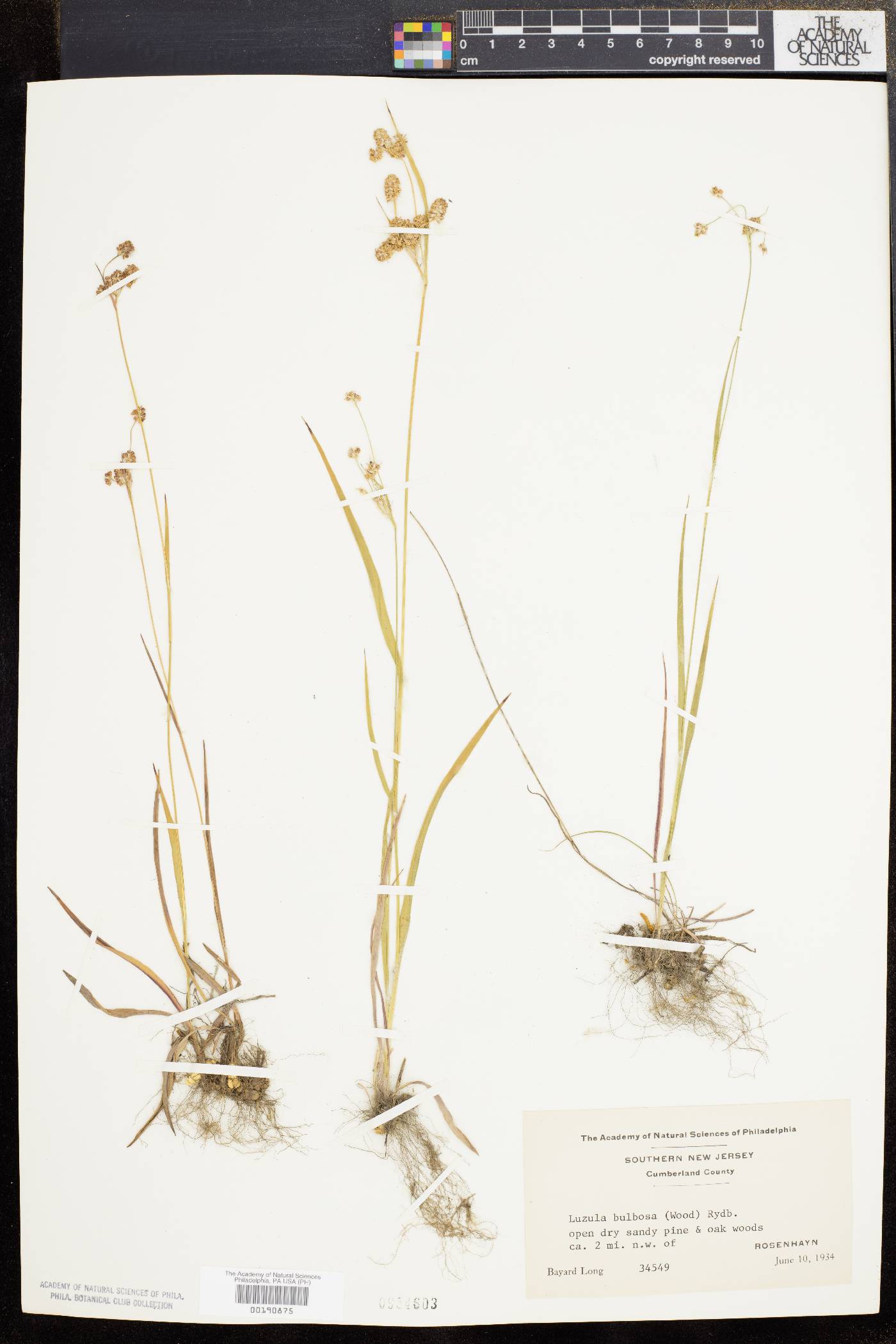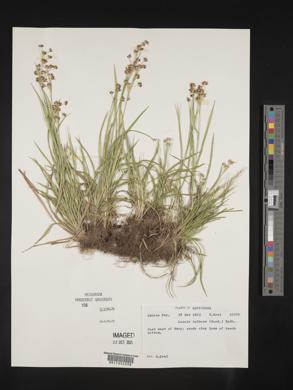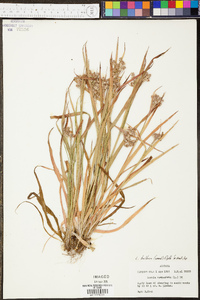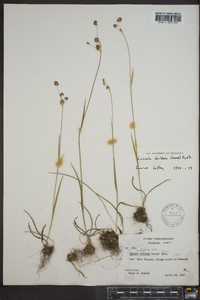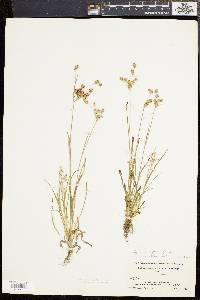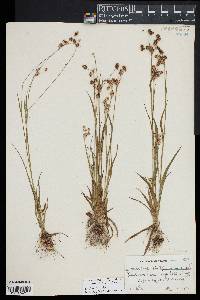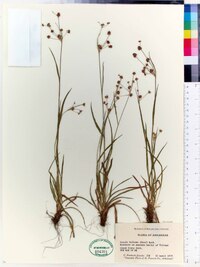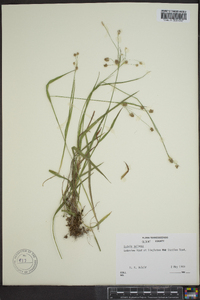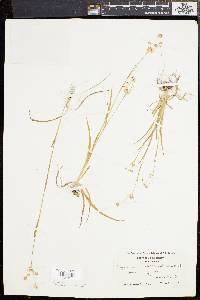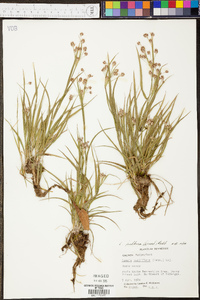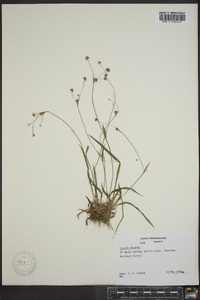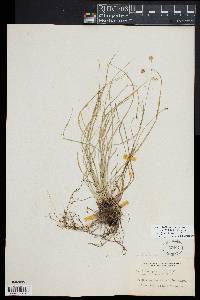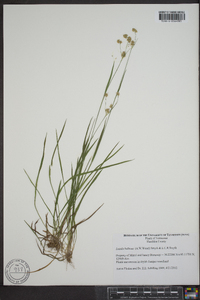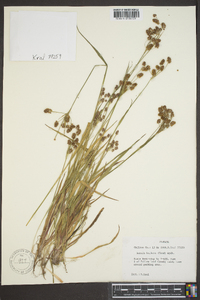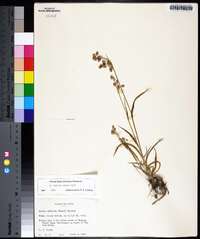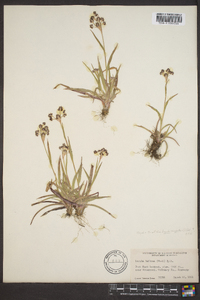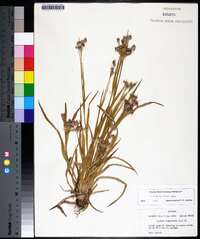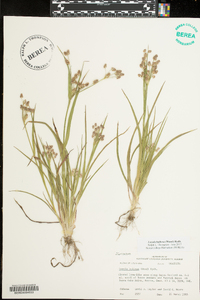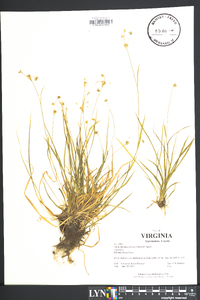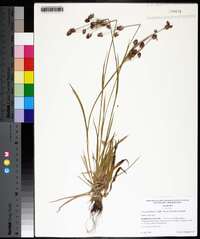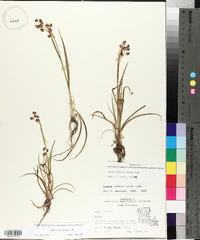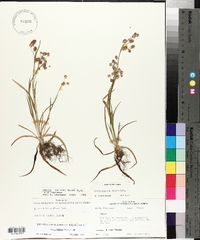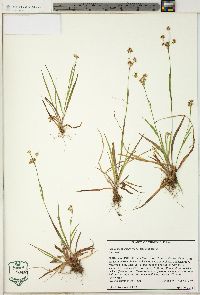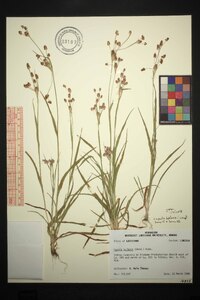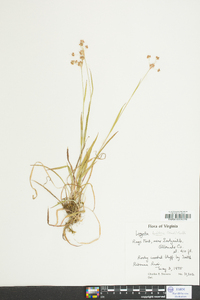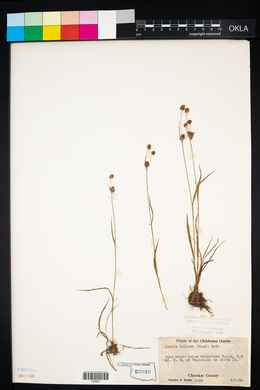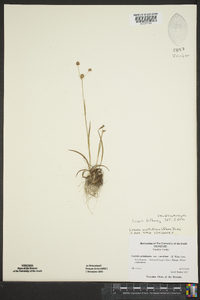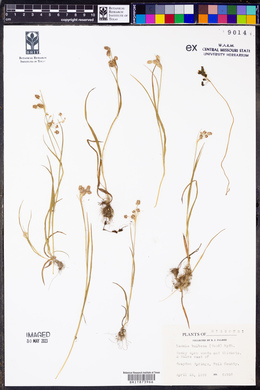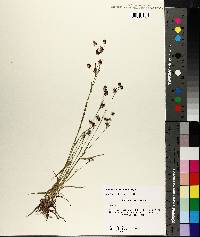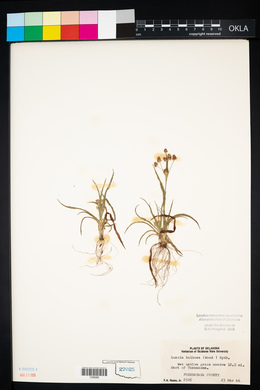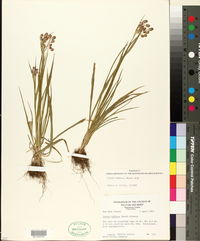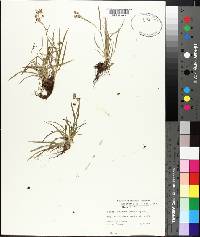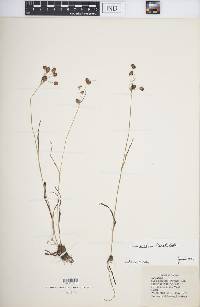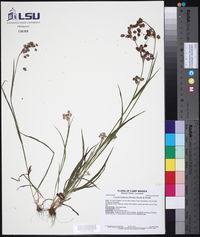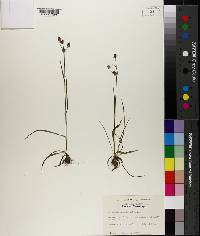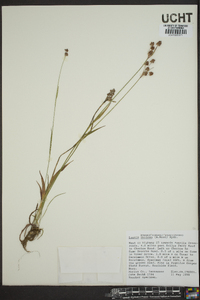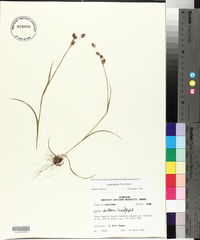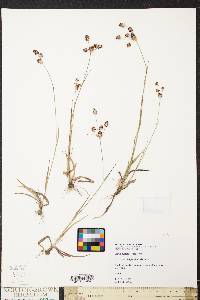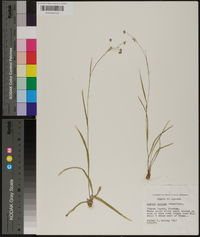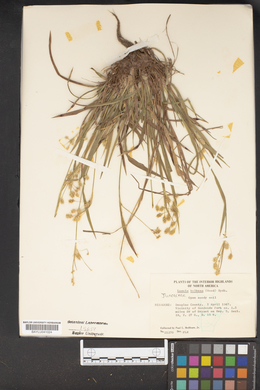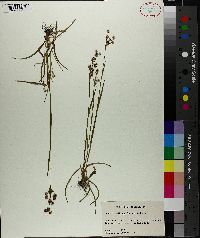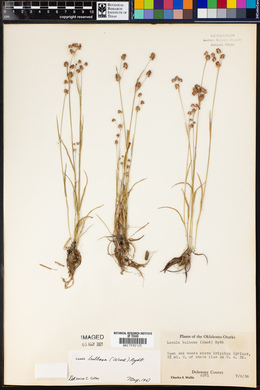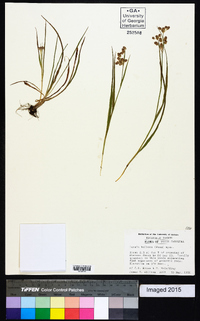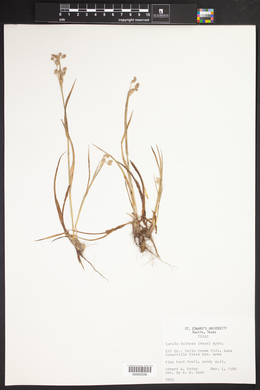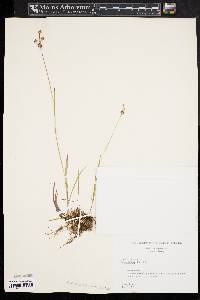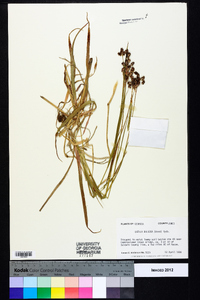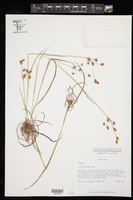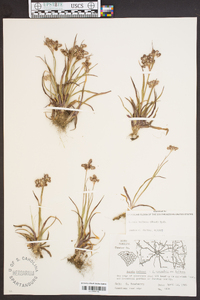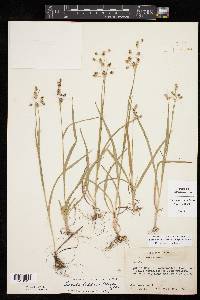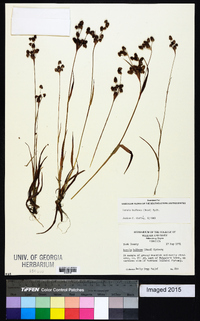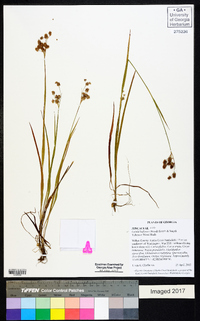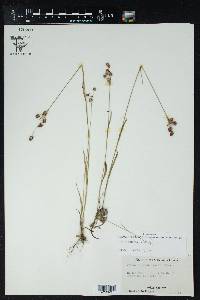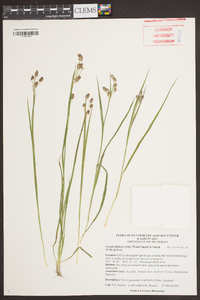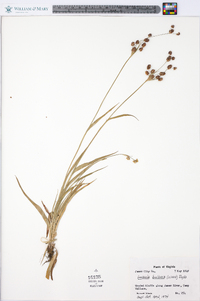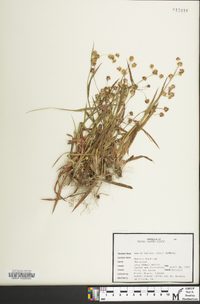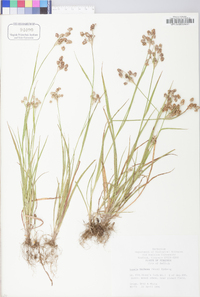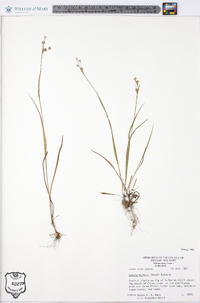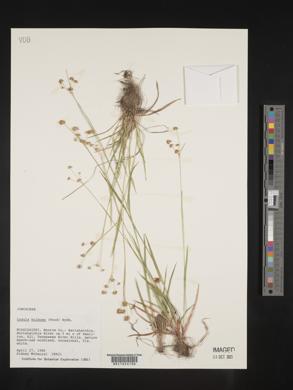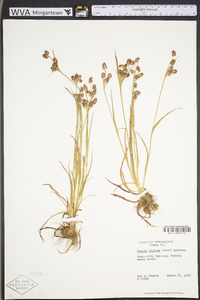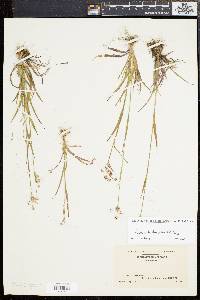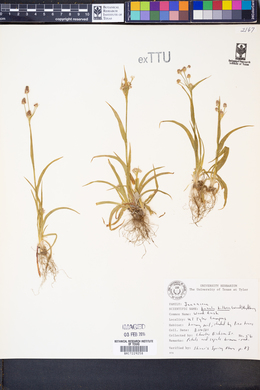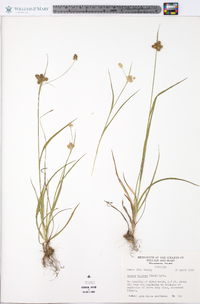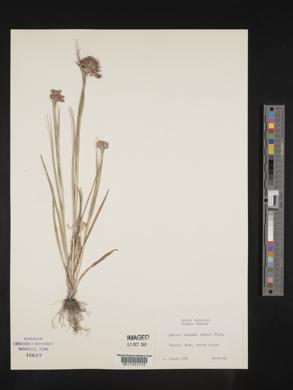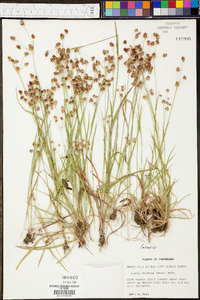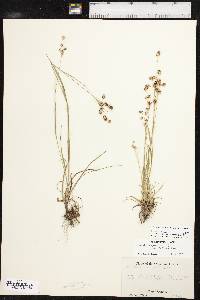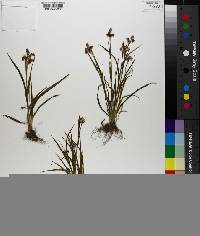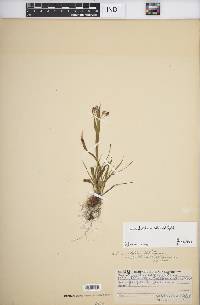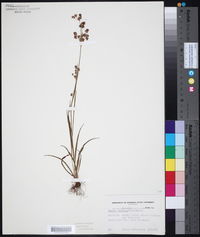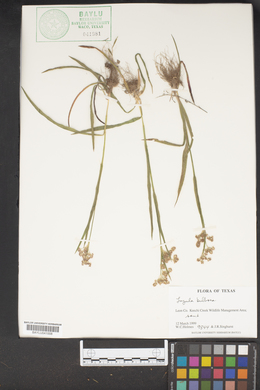
|
|
|
|
Family: Juncaceae
Bulbous Wood-Rush, more...bulbous woodrush
|
Rhizomes short, slender, bearing few to several white, swollen (storage) leaf bases. Culms weakly cespitose or solitary, 8--40 cm. Leaves: basal leaves few; cauline leaves 2--3, to 17 cm x 7 mm, margins scarcely to densely ciliate. Inflorescences: glomerules 3--20 (each with 6--20 flowers), central glomerules sessile or nearly sessile, cylindric, 5--12 x 5--7 mm; peduncles straight, erect, 0.5--7 cm; proximal inflorescence bract leaflike (margins pilose), shorter than inflorescence, margins pilose; bracts purplish with long clear apex, sheathing, margins sparsely to densely ciliate; bracteoles white-clear, shining, margins fimbriate. Flowers: tepals with shining chestnut centers and usually wide clear margins and apex, 2--3 mm; outer whorl usually exceeding inner whorl, at least by awned tip; anthers 1--2 times filament length; stigmas 3--4 times length of styles. Capsules brown, shining, obovoid (apex truncate), equal or longer than tepals, apex truncate. Seeds dark brown, ellipsoid, 0.9--1.3 mm; caruncle 0.5--0.7 mm. 2n = 12. Flowering and fruiting spring--early summer. Dry situations in woods and fields 50--600 m; Ala., Ark., Conn., Del., D.C., Fla., Ga., Ill., Ind., Kan., Ky., La., Md., Mass., Miss., Mo., N.J., N.Y., N.C., Ohio, Okla., Pa., S.C., Tex., Tenn., Va., W.Va. Luzula bulbosa has slender rhizomes that bear few to several white, swollen (storage) leaf bases; cauline leaves (numbering 2--3) have scarcely to densely ciliate margins; flowers have stigmas 3--4 times the length of the styles.
Perennial grasslike forb 8 - 40 cm tall Leaves: a few basal and two to three alternate on stem, linear, flattened, grasslike, up to 17 cm long and 0.7 cm wide, sparsely to densely hairy along edges, and thickened at the tip. Inflorescence: terminal, with three to twenty, erect, straight, 0.5 - 7 cm long branches (central are shortest) ending in 0.5 - 1.2 cm tall, 0.5 - 0.7 cm wide, rounded to short cylindric flower clusters (glomerules). Each glomerule is a tight, dense, compact cluster of six to twenty, tiny, radially symmetric flowers. Flowers: tiny (under 0.5 cm tall), radially symmetric, with six tepals (in two whorls of three; outer three usually longer than the inner three), six stamens, one superior ovary, one long style, and three stigmas. The 2 - 3 mm long tepals have shining chestnut centers with fairly wide translucent edges and bristle tips, the anthers are up to twice the length of the filaments, and the stigmas are three to four times the length of the style. Fruit: clustered, single-chambered, three-valved, shining, brown, inversely egg-shaped, blunt-tipped capsules which are the same length or longer than the tepals. Stems: loosely tufted or single, erect, slender, and arising from short, slender rhizomes which have at least a few white, swollen, bulblets at the leaf bases. Seeds: three per capsule, dark brown, 0.9 - 1.3 mm long, plump, ellipsoid with a curved, whitish, 0.5 - 0.7 mm long terminal appendage (caruncle). Bracts: two subtending inflorescence, leaf-like, softly long-hairy along edges, and shorter than inflorescence. In addition to the two leaf-like bracts, each stalk within the inflorescence is subtended by one or two sheathing, smaller, purplish, variously hairy bracts with elongated and clear tips. Directly below flowers are two to three very small, shining, whitish clear bracts (bracteoles) with unevenly fringed edges. Similar species: Luzula bulbosa is very similar to L. multiflora, except that species never produces white bulblets at the base of the leaves, its capsules are shorter than the tepals, and the seeds tend to be a bit longer on average (up to 1.5 mm). The other species of Luzula reported in the Chicago Region have much fewer flowers in the inflorescence clusters (single, pairs or rarely up to eight). Members of the genus Luzula differ from the genus Juncus by having long-hairy leaf edges, and single-chambered capsules with only three seeds. In addition, species of Luzula will never have septate leaves or auricles at the top of the leaf sheaths. Flowering: April to July Habitat and ecology: Restricted mostly to sandy savannas or meadows in the southern tier of Chicago Region counties. Occurence in the Chicago region: native Notes: This species has also been considered a variety or subspecies of Luzula multiflora, or in a wide sense even the European L. campestris. We have followed the latest work as published in the Flora of North America (Swab 2000). Author: The Field Museum Plants producing basal bulblets; infl varying from as in no. 5 to as in no. 6; glomerules capitate to often short-cylindric; anthers mostly 0.5-1 mm and 1-2 times as long as the filament; 2n=12; otherwise much like no. 5 [Luzula multiflora (Retz.) Lej.]. Woods, thickets, and clearings; Fla. to Tex., n. to Mass., Conn., N.J., Pa., Ind., Mo., and Kans. (L. campestris var. b.) Gleason, Henry A. & Cronquist, Arthur J. 1991. Manual of vascular plants of northeastern United States and adjacent Canada. lxxv + 910 pp. ©The New York Botanical Garden. All rights reserved. Used by permission. From Flora of Indiana (1940) by Charles C. Deam Known in Indiana from only the northwestern counties and apparently confined to the lake and prairie areas where its habitat, very sandy open oak woods, is common. .…… Indiana Coefficient of Conservatism: C = 6 Wetland Indicator Status: FACU |

